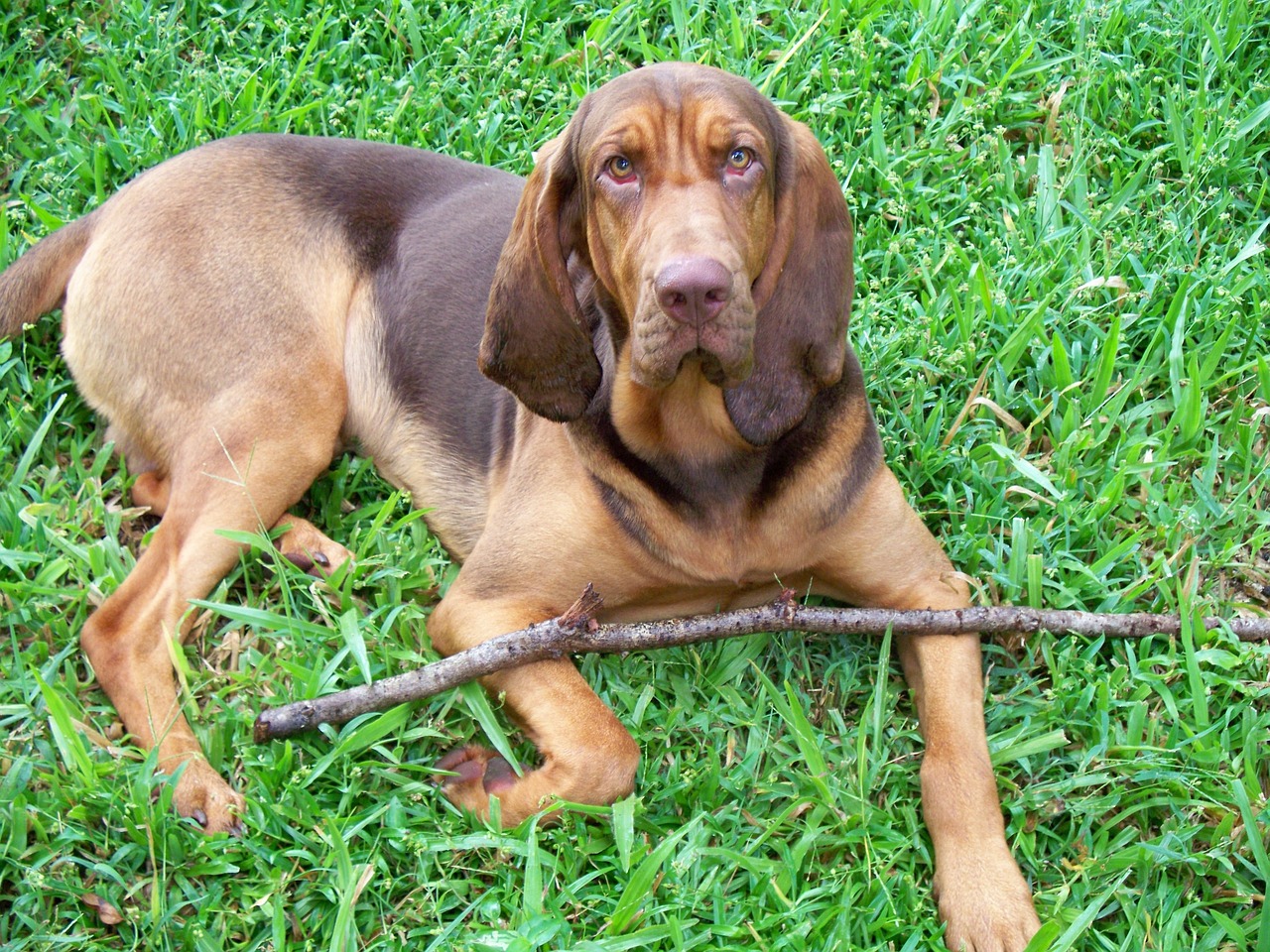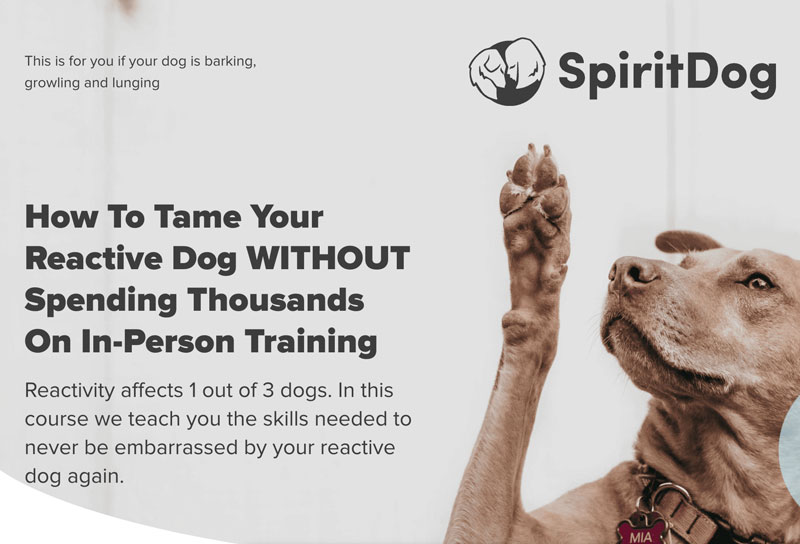
Bloodhounds are well-known for their incredible sense of smell, which makes them great hunting dogs. However, they can also be prone to reactive barking, which can be challenging for their owners. Reactive barking is often triggered by various stimuli, including strangers, other dogs, or even loud noises. In this article, we will discuss ten effective strategies to help bloodhound owners reduce their dog’s reactive barking. These strategies are designed to help owners understand the root causes of reactive barking and provide practical solutions to manage this behavior. With patience and consistency, owners can help their bloodhounds become more relaxed and comfortable in various situations.
⚠️ Note: While the tips below should get you started, it’s important to realize that your Bloodhound’s excessive barking is a symptom of reactivity. Consider looking into an online training course that specifically addresses reactivity (we like SpiritDog’s “Tackling Reactivity course or K9 Institute’s Dog Masterclass)
1. Identify and Understand Your Bloodhound’s Triggers:
The first step to addressing reactive barking is to identify the specific triggers that cause your Bloodhound to bark. Observe your dog closely to determine what situations or stimuli provoke their barking, such as encountering other dogs, strangers approaching, or loud noises. Once you understand the triggers, you can develop a targeted plan to address the issue.
2. Desensitize Your Bloodhound to Triggers:
Desensitization is a gradual process that involves exposing your Bloodhound to its triggers at a comfortable distance, allowing them to become more accustomed to the stimulus without reacting. Over time, you can slowly decrease the distance between your dog and the trigger, always rewarding calm behavior. This process helps your dog become less reactive to the trigger, ultimately reducing their barking.
3. Use Counter-Conditioning with Your Bloodhound:
Counter-conditioning is another technique that can help change your Bloodhound’s emotional response to a trigger. By pairing the trigger with something positive, such as treats or toys, your dog can begin to associate the stimulus with a positive experience rather than fear or anxiety. Over time, this can reduce your dog’s reactive barking.
4. Use Positive Reinforcement with Your Bloodhound:
Reward your Bloodhound for remaining calm and quiet in situations where they would typically react with barking. Consistently offer praise, treats, or affection when your dog displays appropriate behavior in response to their triggers. This positive reinforcement helps your dog learn that there are better ways to cope with their triggers than barking.
5. Teach Your Bloodhound the “Quiet” Command:
Train your Bloodhound to understand and respond to the “quiet” command. When your dog starts barking in response to a trigger, calmly say “quiet” and wait for them to stop. As soon as they are silent, immediately praise and reward them. Repeat this process consistently until your dog associates the command with the desired behavior.
Related: What online dog training program does iHeartDogs recommend for reactive barking?
6. Redirect Your Bloodhound’s Attention:
When your Bloodhound begins to bark reactively, try redirecting their attention to a more productive activity. Offer a favorite toy, initiate a training session, or engage in play to refocus their energy. This helps your dog learn that there are alternative ways to react to stimuli, rather than barking.
7. Provide Adequate Exercise and Mental Stimulation for Your Bloodhound:
A well-exercised and mentally stimulated Bloodhound is less likely to engage in reactive barking. Ensure your dog receives enough physical activity and mental stimulation daily through walks, play sessions, and interactive toys. This can help reduce pent-up energy and frustration, which can contribute to reactive barking.
8. Create a Calm Environment for Your Bloodhound:
A chaotic or noisy environment can exacerbate your Bloodhound’s reactive barking. Create a calm and quiet space for your pet, with a comfortable bed and designated area for their toys. Use calming scents, like lavender or chamomile, and soothing sounds, such as classical music or white noise, to help reduce anxiety and promote relaxation.
9. Manage Your Bloodhound’s Environment:
While you work on addressing your Bloodhound’s reactive barking, consider managing your environment to limit exposure to triggers. This may involve using window films to obscure your dog’s view of passersby, creating a designated “safe space” for your dog to retreat to, or using baby gates to restrict access to areas with high trigger exposure. Managing your dog’s environment can help reduce its reactive barking while you work on implementing other strategies.
10. Try an Online Dog Reactivity Training Course
If your Bloodhound’s reactive barking continues despite your efforts, consider consulting with a professional dog trainer or behaviorist.
2 online dog training programs we like are:
1. SpiritDog’s “Tacking Reactivity” Course
The SpiritDog Tackling Reactivity Course is an online training program designed to help dog owners address their dog’s reactive barking without the need for expensive in-person training. The course aims to help owners understand their dog’s triggers and teaches techniques to calm and accommodate reactive dogs. Developed by experienced dog trainer Steffi Trott, the program offers video lessons, instructional PDFs, quizzes, and access to trainers for support.
2. K9 Training Institute’s “Dog Masterclass”
More than just an obedience course, this more comprehensive training course tackles any behavior problem you might face with your dog.
10 Reasons Why a Bloodhound Might Be Reactive Barking
- Protective instincts: Bloodhounds are loyal and protective of their owners, which may lead them to bark excessively when they perceive a threat.
- Territorial behavior: Bloodhounds may bark aggressively to protect their territory, such as their yard or home.
- Fear or anxiety: If a Bloodhound is anxious or fearful, they may bark excessively in response to stimuli that they perceive as threatening or stressful.
- Separation anxiety: Bloodhounds are social animals and may become distressed and bark excessively when left alone for long periods.
- Lack of socialization: If a Bloodhound has not been socialized properly as a puppy, they may react to new people, animals or situations with excessive barking.
- Hunting instincts: As a hunting breed, Bloodhounds may bark excessively when they detect prey or scent trails.
- Attention-seeking behavior: Bloodhounds may bark excessively to get attention from their owners or to get what they want, such as food or toys.
- Boredom: If a Bloodhound is bored or lacks mental stimulation, they may resort to excessive barking as a way to entertain themselves.
- Medical issues: Certain medical conditions, such as hearing loss or cognitive decline, may cause a Bloodhound to bark excessively.
- Lack of training: Bloodhounds require consistent training to learn appropriate behavior and commands. Without proper training, they may bark excessively or engage in other unwanted behaviors.
In conclusion, reactive barking can be a common behavior problem in Bloodhounds. However, it can be managed and reduced with the right strategies and training techniques. It is important to identify the underlying cause of the barking, which can range from territorial protection, fear, anxiety, boredom, or aggression towards other dogs or strangers. Understanding the triggers and using positive reinforcement techniques can help teach a Bloodhound to remain calm and quiet in stressful situations. With consistency, patience, and the right approach, it is possible to reduce reactive barking and improve the overall behavior of a Bloodhound.
NEXT UP: Can an Online Training Course Help Stop My Bloodhound’s Barking?



 Toledo, United States.
Toledo, United States.